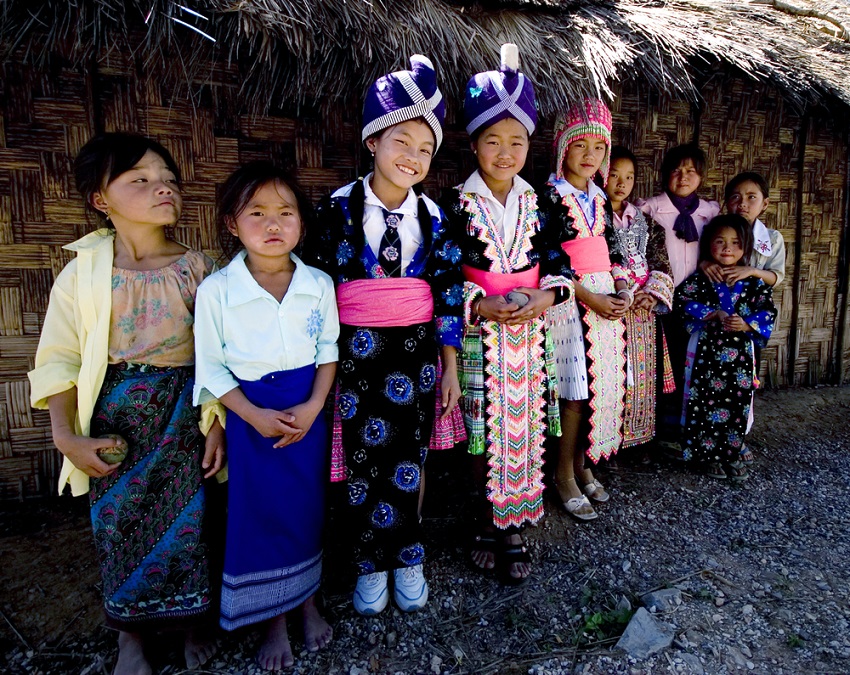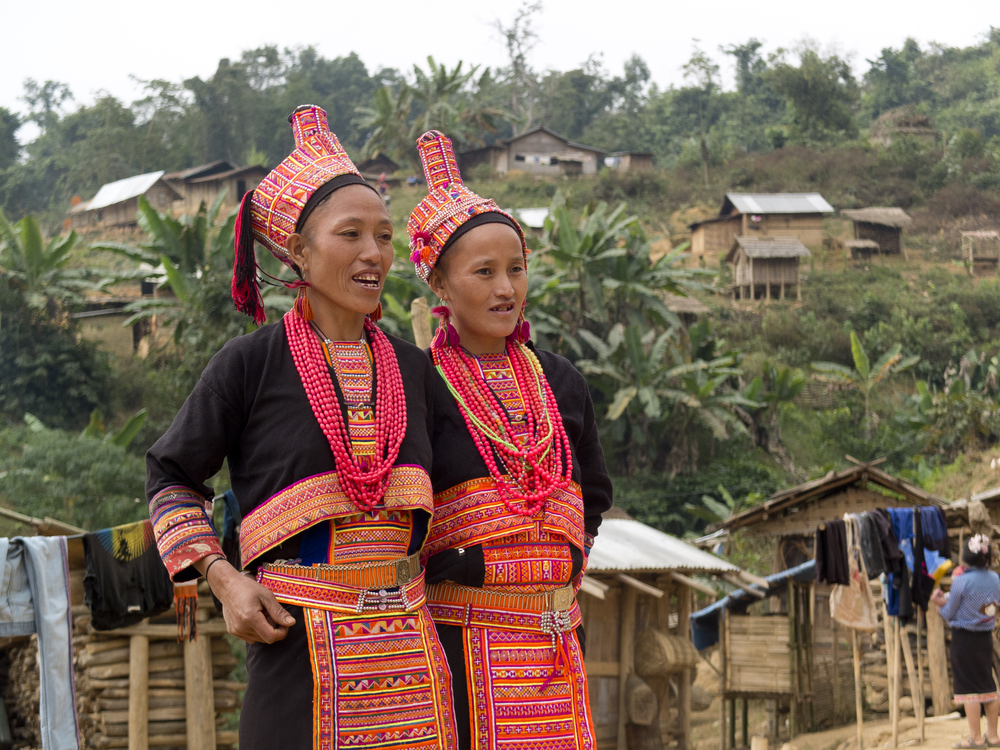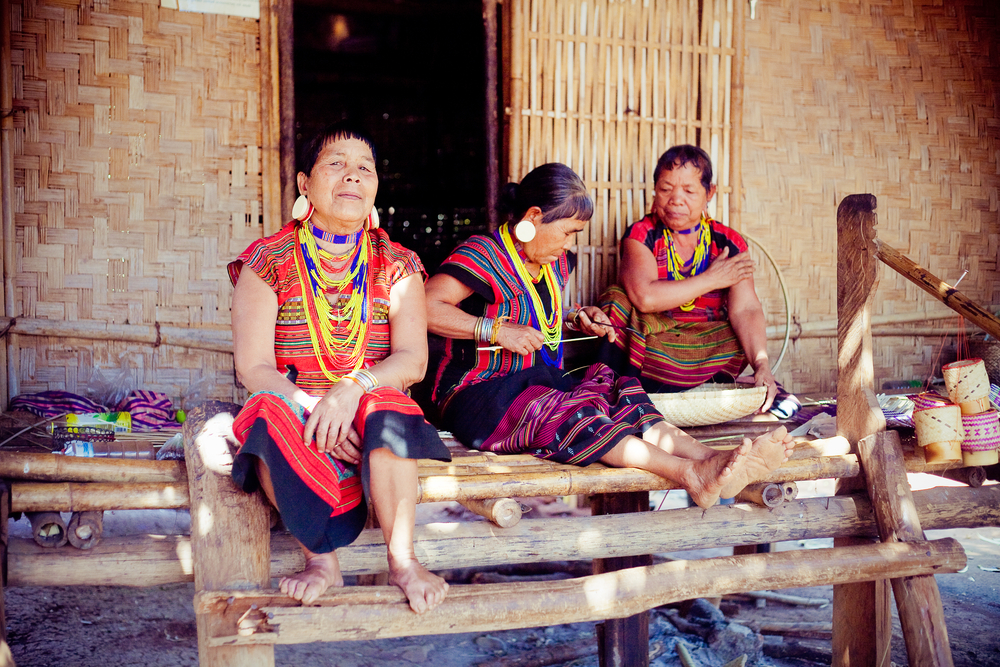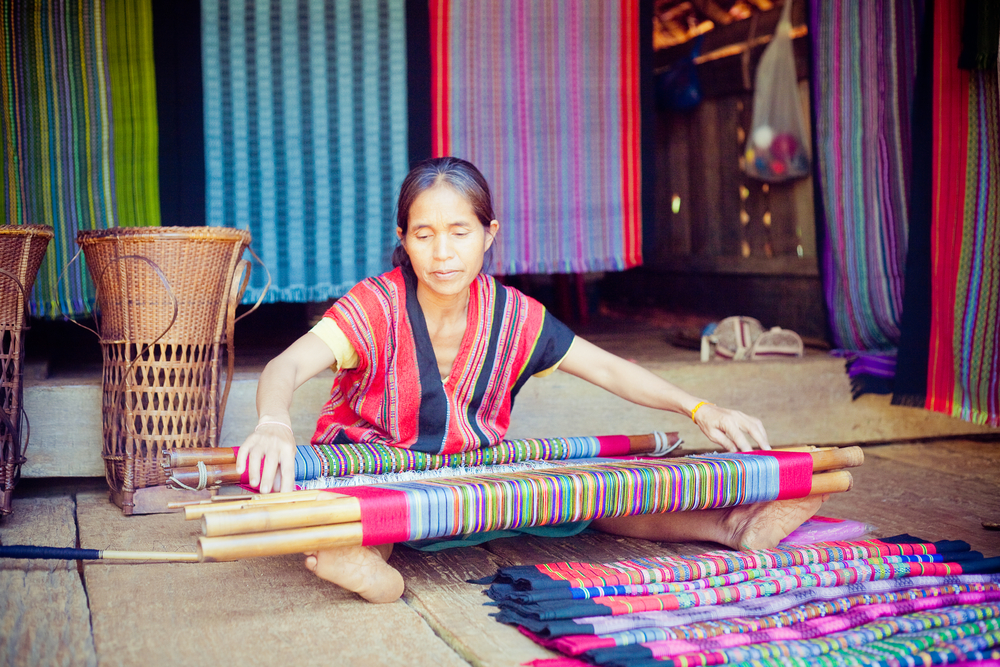Laos - ethnicity
According to demography in 2005, Laos has estimated 5.6 million populations. However, a more recent census record in 2009 shows approximately 6.1 million populations (Population Census 2005, 2011). The most recent methodology in 2005 used to classify ethnic groups in Laos has been based on these four ethno-linguistic families: Tai-Lao, Mon-Khmer, Sino-Tibetan and Hmong-Myan. The grouping, therefore, decides 49 tribes that can be sub-classified into 160 groups. Anyhow, history of ethnic group classification in Laos has been quite complicated yet still arguable until now.
After ending its last absolute monarchy in 1975, Laos by far has conducted the national census of three times in 1985, 1995 and 2005. The classification of ethnic groups is to be expected each time as it is conducted by Laos Front for National Construction (LFNC) established in 1976 by the name of A Committee for Nationalities. It was part of Neo Lao Haksat (NLHS), but later in 1979 it was developed into Neo Lao Sang Sat (NLSS). This organization is directly responsible for classification of ethnic groups in Laos.
A population proportion in Laos according to statistics in 2005 finds two-third or a 65% sum made of 8 indigenous tribes whose spoken language is Tai-Lao Language while those dwelling on mountain or highland making 11% of the populations speak Sino-Tibetan and Hmong-Myan Languages. The seven indigenous tribes belong to Sino-Tibetan Language and the other two indigenous tribes belong to Hmong-Myan Language. The Mon-Khmer Language makes 24% of the populations forming 32 predominant indigenous tribes.
Table 1: Ethnic Groups in Laos Classified by Ethno-Linguistic Families by Neo Laos Sang Sat (NLSS) in 2005
|
Ethno-Linguistic Family |
Tribe |
Quantity |
The population proportion (%) |
|
Tai-Lao |
Xek, Nhouan, Tai, Thaineua, Phuthai, Nhang, Lao, Lue |
8 |
65* |
|
Mon-Khmer |
Kammou, Pray, Xingmoun, Phong, Then, Eudou, Bit, Lamet, Sam Lao, Katang, Makong, Tri, Jru,Talieng, Ta Ooy, Kriang, Cheng, Sadang, Xouey, Nhahoen, Lavi, Pako, Khmer, Toum, Ngouan, Mueang and Kri |
32 |
24 |
|
Sino-Tibetan |
Akha, Singsili, Lahu, Sila, Hayi, Lolo, and Ho |
7 |
8 |
|
Hmong-Mien |
Hmong and lu Mien |
2 |
3 |
*Lao tribe takes up 55% of the group
In terms of culture and language, the most varied group is the Mon-Khmer Language making the predominant group of 32 when compared to other ethno-linguistic families. Meanwhile, its population proportion shares one-fourth of the populations making 24%.
It is known the ethnic group classification in Laos has never been too straightforward but rather realizes political implications and power relations. The population census in 1955 carried out by Laotian government at that time had managed to include Lao and Tai in the Lao group. As a result, a Laotian population proportion was rising to70%. It shows that a population census survey is a major instrument of building Laotian nationalism. However, it is unclear whether it is a political factor or the population census survey being unable to access to remote areas that the Akha population has faced a decline in numbers. (Pholsena, 2006)
Joachim Schliesinge, an ethnic scholar, gave his opinion on the 1955 population survey and the ethnic group classification that it was just a vague classification that had not been based on correct population database. Moreover, it did not give a realistic overall picture of ethnic situation in Laos but a prediction and the exercise political power determining which groups were to collapse, which groups were unnamed or which groups were to be labeled ‘the others’. (Schliesinger, 2003)
On the other hand, Grand Evans, a Lao studies scholar, pointed that the population census survey did not give importance to those groups living in the city like Chinese, Vietnamese and Thai while, in fact, a number of these people was copious. Categorized as ‘the others’, it is possible some of them were stereotyped as ‘Lao’. (Evans, 2003)
Though there have been many official versions of ethnic group classifications provided by political and scholar circles, one ‘well-established’ classification popularized in both operation and perception is a classification of Lao Loum, Lao Theung and Lao Soung by Lao Communist government. This category was initiated by P.S. Nginn in early 1960’s and was based on settlement geography.
Lao Loum is those inhabiting lowland areas.
Lao Theung is those inhabiting upland localities.
Lao Soung is those inhabiting mountains.
This classification is thought to be a creative method of the nation in which the state can easily identify a group for people.
The political strategy that aims at unifying every tribe to create one single entity of the nation somehow is employed by putting ‘Lao’ before the tribes’ names. Nonetheless, the tribes have languages, religious beliefs, traditions and culture entirely different from Laotian. The ethnic classification based on settlement geography was problematic and contradictory to reality. Some tribes had moved from mountain to live on the plain for a long time while some Laotian emigrated to live on mountain.
Implementing state level policies, the state has never been so subtle in declaring a principle of ‘Equality of Every Tribe’ yet it seems contradictory to a fundamental concept of Lao nationalism believing in ‘diversity under unity’. Kaysone Phomvihane, the late leader of Lao People's Revolutionary Party once said ‘each tribe has its own great and beautiful culture. They are all kindreds of Lao nation just like different kinds of flowers growing in a colorful garden giving pleasant smells.’ (Banomyong, 2006)
Laohoua Cheutching, a Hmong-Laotian scholar, criticized the government’s policy on the ethnic groups in Laos that the principle of ‘Equality of Every Tribe’ looked good to every tribe during which they were fighting in a war with the Royal Lao Government. Yet still, after 1975, the policy of ‘Equality of Every Tribe’ had been an ideal weapon of the party leaders so that they could enjoy taking political control. In fact, there was an attempt to execute a policy of tribal assimilation during the first ten years such as a policy of building a new society that particularly serves product development and a policy of introducing socialist culture for the people to become new Laotians. However, the cooperation with the tribes’ leaders during the war was ended in 1975.
After a failure of minority assimilation policy, the leader decided to change policies on tribes. He introduced economic liberalism. Later, the parties and the government relied on political and economic systems to determine the problems. The minorities especially Hmong being opposed to most tribes were usually put down by state soldiers. However, a main goal of the government these days is to include the tribes to be part of the society. Fostering cultures and traditions as well as improving quality of life of the minorities have been highlighted issues again. (Cheutching, 2000)
What has been a major conflict between the state and the ethnic groups in Laos is slashing and burning agriculture in which the state thinks slashing and burning in mountain areas is destroying environments and forests. It is, thus, trying to move upland villages to ground villages in order to solve the problem and hopes that this would reduce forest encroachments. Unfornately, the new immigrants are facing some serious problems of lacking availability of agricultural land and disputes against the former tribal settlers over agricultural lands. The state failed to provide careful preparations for the re-settlement of the minorities including providing other necessary resources needed for life. The re-settlement of the minorities was undoubtedly doomed to failure. Some tribes decided to move back to where they had been afterwards. (The government of Lao PDR, August 2006)
Grant Evans speculated that the policies on the minorities developed by the Royal Lao Government was no different from the ones developed by the Lao Government, but the propaganda by the Lao Government made believe it was a representative of the minorities that just posed problems for the state. Thanks to the policy, the minorities came to realize their racial differences even more while clinging to the hope that the state would quickly uplift their social status. Though the state had declared every group was equal, the minorities knew they had never had the equal rights of citizenship. Evans provided an interesting example of Kamou, one of pivotal groups in Lao Communist Force. One of the Kamou people had described ‘when the revolutionary took place, the party gave the people everything. Now the people must give the party everything. Laotians became rich, but Kamou are still poor.’(Evans, 2003)
Bibliography
Population Census 2005. (2011). เรียกใช้เมื่อ 19 May 2012 จาก Lao Statistics Bureau: http://www.nsc.gov.la/
Grant Evans. (2003). Urban Minorities. ใน Grant Evans, Laos and Ethnic Minority Cultures: Promoting Heritage (หน้า 241). Paris: UNESCO.
Joachim Schliesinger. (2003). Ethnic Groups of Laos Volume 1. Introduction and Overview. Bangkok: White Lotus.
Laohoua Cheutching. (2000). The Situation of the Hmong and Minority Polities in Laos. ใน Laohoua Cheutching, Ethnic Monoroties and Nationalism in Southeast Asia (หน้า 148-150). Frankfurt am Main: Peter Lang.
The government of Lao PDR. (August 2006). Lao People's Democratic Republic: Northern Region Sustainable Livelihoods Development Project. Vientiane: the government of Lao PDR for the Asian Development Bank.
Vattana Pholsena. (2006). Post-War Laos: the Politics of Culture, History and Identity. Singapore: Institute of Southeast Asian Studies.
Vattana Pholsena and Ruth Banomyong. (2006). Laos from Buffer State to Crossroads. Chiang Mai: MekongPress.





